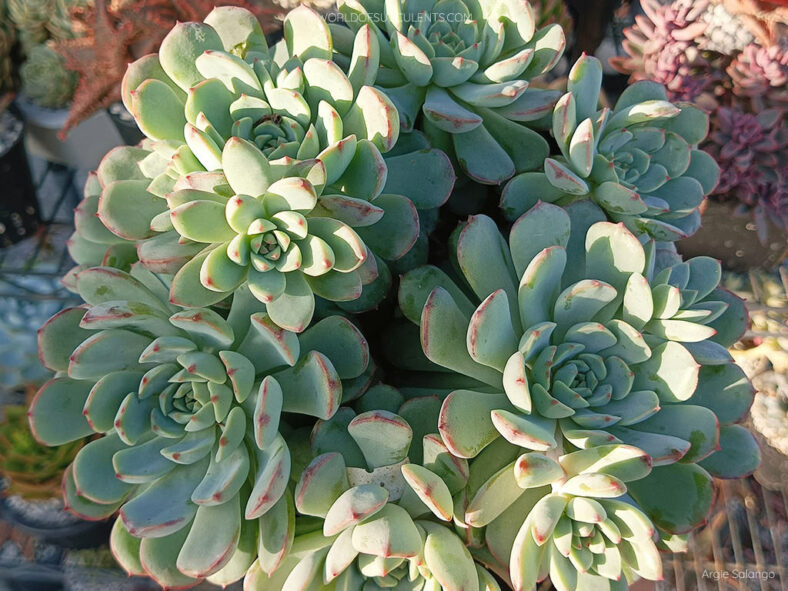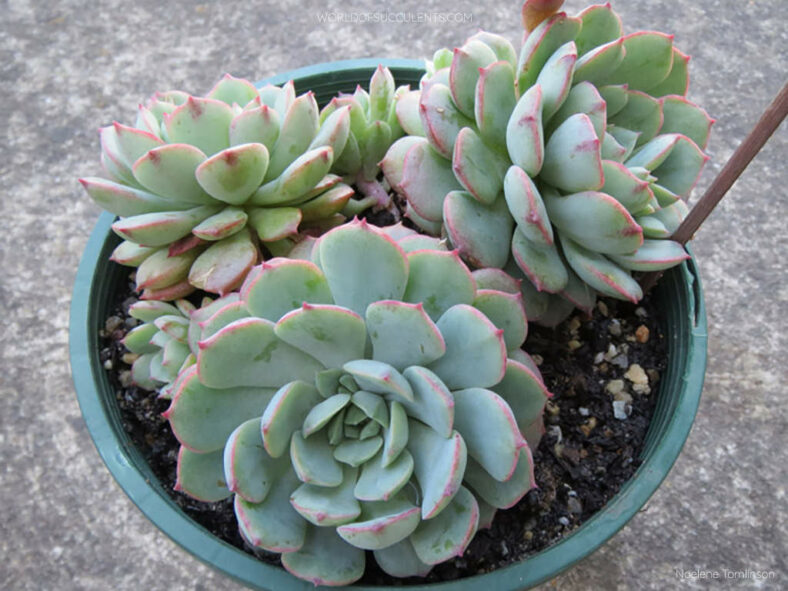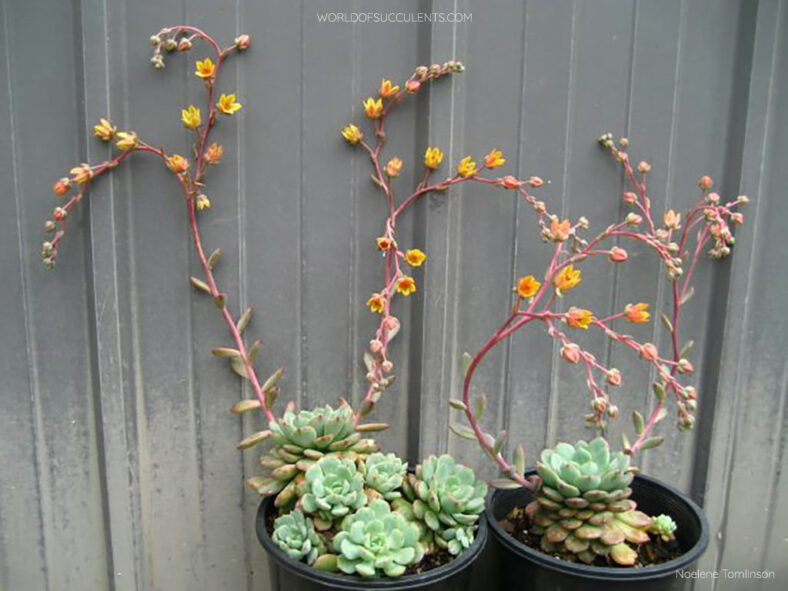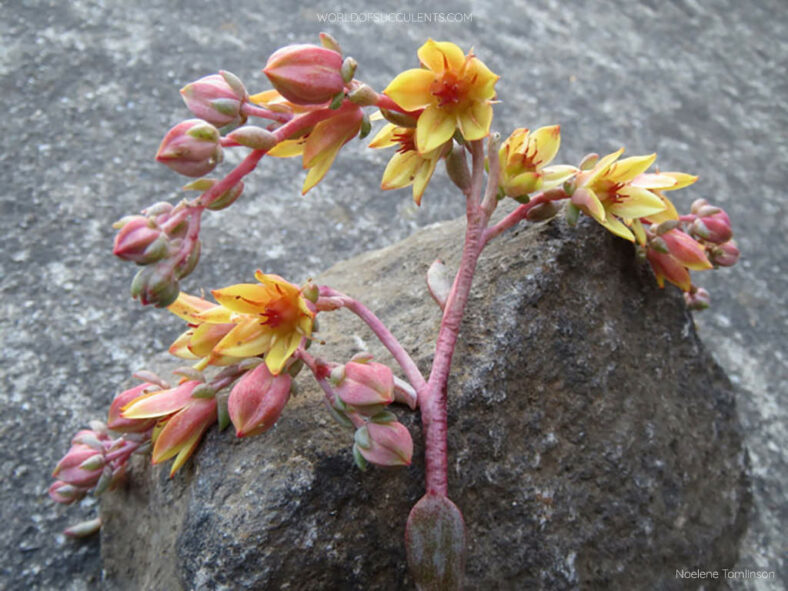×Graptoveria 'Accolade' is a beautiful plant with compact rosettes that displays its best color during the cooler months.
Scientific Name
×Graptoveria 'Accolade'
Scientific Classification
Family: Crassulaceae
Subfamily: Sempervivoideae
Tribe: Sedeae
Nothogenus: ×Graptoveria
Origin
×Graptoveria 'Accolade' is an Australian hybrid created by Max Holmes and first published in Cactus and Succulent Journal (Woollahra) in 1996. According to the creator, it results from a cross between Echeveria globulosa and Graptopetalum superbum. However, since Echeveria globulosa has not been in cultivation for a very long time, it is more likely that the Echeveria parent is the hybrid Echeveria 'Vincent Catto' that is widely distributed as Echeveria globulosa.
Description
×Graptoveria 'Accolade' is a small succulent that forms rosettes of blue-green leaves with a dark pink line along the tips and a short stripe on the undersides. The rosettes can grow up to 3.2 inches (8 cm) in diameter and produce offsets, forming a compact clump over time. The leaves are paddle-shaped, slightly upturned, and end with a short sharp point, measuring up to 2 inches (5 cm) long. They are thickly covered with a waxy bloom.
During the spring, ×Graptoveria 'Accolade' produces bell-shaped flowers that are pink on the outside and yellowish inside. The petals have a few tiny reddish spots at the tips and an indistinct stripe in the center. The flowers appear on stalks with several branches with fleshy bracts that can grow up to 0.5 inches (1.2 cm) long.

How to Grow and Care for ×Graptoveria 'Accolade'
Light: ×Graptoveria 'Accolade' requires full sun to partial shade for optimal growth. Therefore, place it near the brightest window in your home. In addition, if you are moving the plant outside in spring, do it gradually and avoid exposure to intense afternoon sun.
Soil: Having soil that drains quickly is most important for growing a healthy succulent. While many growers prefer to create their own soil mix, commercial soil for succulents will work fine.
Temperature: High temperatures are not a problem as long as there is plenty of fresh air, but ×Graptoveria 'Accolade' is a tender succulent and must be brought indoors if there is a risk of freezing temperatures. It grows best in USDA Plant Hardiness Zones 10a to 11b, with average minimum winter temperatures ranging from 30 to 50 °F (-1.1 to 10 °C).
Watering: During the growing season, this plant prefers the "soak and dry" method. Water deeply and then let the soil completely dry out before watering again. Water sparingly during the winter, only enough to keep the plant from shriveling.
Fertilizing: Although it can grow well without fertilizer, the plant may benefit from extra nutrients. Feed only during the growing season and use a water-soluble fertilizer diluted to half the recommended strength.
Repotting: If growing it in a container, repot as needed in spring or early summer, but ensure the soil is dry before you start.
Propagation: The easiest way to get a good-sized new plant is by offsets, but ×Graptoveria 'Accolade' is also easy to propagate by leaves. Spring and summer are the best time to separate offsets.
Learn more at How to Grow and Care for Echeveria.
Toxicity of ×Graptoveria 'Accolade'
×Graptoveria 'Accolade' has no toxic effects reported. But although it is safe for growing around children and pets, eating the plant is not advisable.
Links
- Back to nothogenus ×Graptoveria
- Succupedia: Browse succulents by Scientific Name, Common Name, Genus, Family, USDA Hardiness Zone, Origin, or cacti by Genus
Photo Gallery
Click on a photo to see a larger version.


